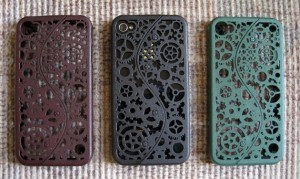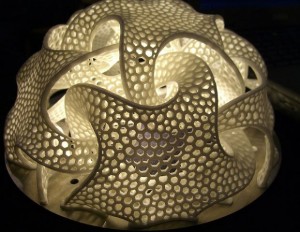PLA vs. ABS Plastic – The Pros and Cons
There are loads of materials available, but when it comes to polymeres (like plastic), two types of filament are most popular; PLA and ABS plastic. But what are the differences? Which one is best? To answer these questions, first let me tell you a bit more about them.
PLA (poly lactic acid)
PLA is a bio-degradable type of plastic that is manufactured out of plant-based resources such as corn starch or sugar cane. This is why it is called ‘the green plastic’. Be sure to throw it in a filament recycler and you’re as green as can be. It’s widely used for packaging, such as food products, but of course you can also use it to print!
ABS (Acrylonitrile Butadiene Styrene)

ABS plastic is made out of oil-based resources and it has a much higher melting point than PLA plastic. It’s also stronger and harder. Because of these particular features, ABS is widely used for purposes ranging from car bumpers and motorcycle helmets to musical instruments, golfclubs and Lego.
So, which is better?
PLA
| Pros | Cons |
|---|---|
| + Can be printed on a cold surface | – Can deform because of heat (like a cassette in a car) |
| + More environmental-friendly | – Less sturdy (than ABS) |
| + Shinier and smoother appearance | |
| + Smells sweet when being print =) | |
| + No harmful fumes during printing | |
| + Higher 3d printer speed | |
| + More detail |
ABS
| Pros | Cons |
|---|---|
| + Very sturdy and hard | – Made out of oil, so more damaging to the environment |
| + Suitable for machine or car parts | – Deformes when not being print on a heated surface |
| + Higher melting point | – Hot plastic fumes when printing |
| + Longer lifespan | – Therefore, you need ventilation |
| – More difficult to print | |
| – Not suitable for using with food |
A company that’s making parts for machines will be better off when choosing ABS, because of its lifespan, its strength and its higher melting point. On the other hand, an artist who is making 3d models at home, will be better off choosing PLA because of its ease-of use, its appearance and because you don’t need ventilation.
But, as you might have noticed, there are a few drawbacks to using either of the plastics. For instance, let’s say you want to print some new cups and dishes at home. If you use PLA, you can’t put it in the dishwasher since it would deform through the heat. ABS is not an option either, since it’s oil-based and therefore cannot be used for holding food or beverages. Read this article for more info on ABS.

In conclusion, both ABS and PLA plastic have ups and downs, it depends largely on what and where you were planning on printing. Hopefully they invent a new kind of plastic one day that’s cheap, doesn’t do harm to the environment and is suitable for all possible jobs. If you want to learn more, check out this in-depth article on ABS plastic.



Thanks for the simple pros and cons lists and detailed explanation. Looks like I’ll be going with PLA for my little 3D printer at the school club.
Another con against ABS is that it shrinks during printing.
ABS parts are easier to glue together
here you well define the different between PLA and ABS Plastic
Look at 3D printing, the more impressive it gets
Thanks for sharing that kind of useful information
What is the melting point of the ABS and PLA filaments.
Depends on the make and model of the filament. I have seen PLA ranging from 190c to 210C and I have seen ABS from 230C to 270C That is hardly definitive, that is just what I have seen…